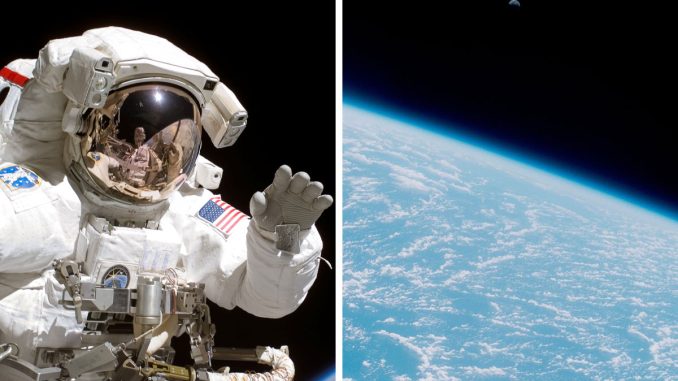
As experts predict that the rapid advancement of technology will make space travel more common in future years—NASA‘s Artemis program is set to establish a permanent orbiting laboratory in low-Earth orbit by the end of the decade—a novel field of study emerges: astroforensics.
While Agatha Christie couldn’t have written Murder on the Moon back in the 1930s, a new study shows that the science community is already bracing itself for this scenario.
After all, our planet’s surface gravity may differ from that of the Moon, but human nature will likely remain a constant.
“As humanity advances into a space-faring species, the risk of injury by multiple means and intentions will follow,” the study, published on Forensic Science International: Reports, reads.
A group of scientists have conducted a study that shows what solving a crime would look like in space
Image credits: NASA
“Expanding understanding of how forensic science adapts to extraterrestrial environments is a novel and inevitable expansion into the next forensic frontier.”
The study centers on a common forensic science discipline: bloodstain pattern analysis.
By recreating this type of evidence in a microgravity environment, scientists hope to gather insight into how crime scene investigations could be conducted in space.
It’s important to note that true zero gravity exists far away from any celestial bodies. When close to a body such as the Moon, there will be a low gravitational influence—also known as microgravity—according to ScienceAlert.
Gravity plays a crucial part in how airborne liquid blood interacts with a surface and creates stain patterns. Consequently, the altered gravity conditions of space should translate into observable differences in this phenomenon.
“As humanity advances into a space-faring species, the risk of injury by multiple means and intentions will follow,” the study reads
Image credits: NASA
To conduct their investigation, scientists used a parabolic flight research plane that induces short periods of microgravity due to its up-and-down flight path.
During this period of freefalling microgravity, a number of synthetic blood drops were projected onto a piece of paper. The resulting bloodstain was then analyzed using routine Earth-bound protocols.
The experiments were conducted inside a repurposed pediatric incubation chamber, referred to as a glove box, ScienceAlert reported.
Investigators didn’t use real blood for the study due to biohazard concerns in the cabin of the plane.
The synthetic blood was loaded into a syringe, and once microgravity was induced, the syringe was manually depressed to project the blood across 20 cm (7.87 inches) onto a surface of white paper.
Investigators focused on the forensic science discipline of bloodstain pattern analysis
Image credits: NASA/Roscosmos
Image credits: NASA
After concluding their study, scientists found that microgravity does indeed affect the behavior of the blood drops and the stains they create.
Firstly, they observed that under microgravity conditions, blood traveled in a straight line until it came into contact with the surface instead of falling in a parabolic manner.
Given that the distance was only 20 cm, the straight-line flight path didn’t have a significant effect on the resulting pattern.
Scientists predict that this difference would become more apparent if a longer trajectory for the blood were to be analyzed, a scenario that the parabolic research aircraft didn’t allow.
By recreating a space with microgravity conditions, they analyzed the trajectory of synthetic blood and its resulting pattern
Image credits: sciencedirect
Regarding the spreading action of the blood upon striking the surface, the dominating force of surface tension and cohesion translated into a stain that was of a smaller shape and size than it would be on Earth.
In the gravity environment of Earth, liquid blood drops undergo a series of stages in the stain creation process. This includes the droplet’s collapse, the formation of a small wave, and the spread into a final stain shape.
Investigators mentioned that in order to expand their research, larger microgravity environments would be required.
People reacted to the novel discipline with hilarious references
The post New Study Shows What Solving A Homicide In Space Would Look Like first appeared on Bored Panda.
